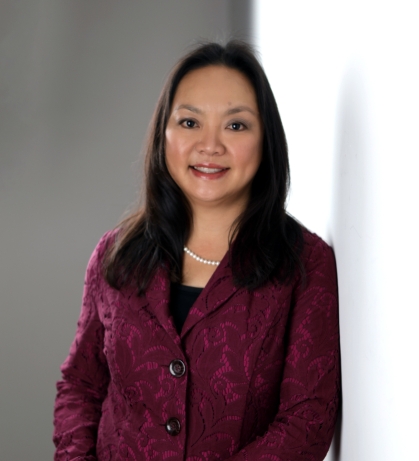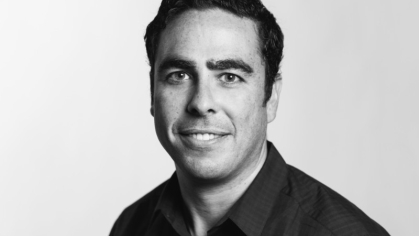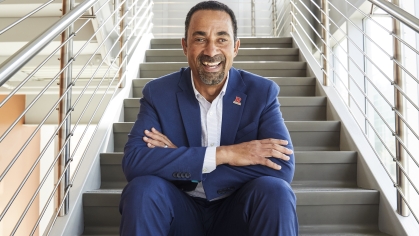“A lot of the Rutgers Engineering students and alumni who work here at WSP have a really good foundation in engineering – and they are all superstars here.”–Tam Sillick
As a young child, Tam Lam Sillick boarded a boat with 12 members of her extended family and 340 others to escape Vietnam. After a perilous journey, they spent months in a Hong Kong refugee detention camp, before immigrating to New Jersey. Sillick, a first generation college student, earned her bachelor of science degree in civil engineering from Rutgers in 1998 and her master of science degree from Georgia Institute of Technology in 2000, after which she joined WSP in the U.S. as a structural engineer. Today, she is a vice president and Lawrenceville, NJ office lead for the global engineering and professional services firm. An impassioned volunteer, she is a member of the Department of Civil and Environmental Engineering (CEE) Industry Advisory Board, the New Jersey State Board of Professional Engineers and Land Surveyors, and a Director at Large of WTS (Women’s Transportation Seminar) NJ.

How did your immigration experience shape you?
My family were boat people and came to New Jersey when I was very young. What we went through was so impactful and has determined how I face challenges, react to life, working hard, and not taking things for granted.
Why Rutgers?
Growing up in NJ, we tend to under appreciate the value of the state universities. Rutgers was a great fit for me, and besides being a great fit, it was close to home in Freehold – although I lived on campus – was affordable, and had a close, but diverse community.
One of my daughters just finished her first semester at Rutgers studying molecular biology and biochemistry. She’s the first person I’ve ever known who was looking forward to organic chemistry.
What drew you to civil engineering and structural engineering?
Growing up, my dad was a handyman and was able to fix anything for his clients. I was impressed by that and wanted to pursue engineering to help solve problems and create solutions.
As an undergraduate, I had internships every summer in the civil engineering field, where I worked for a railroad company in design and construction; a commercial building construction company; and a transportation engineering company in their structures group. I just loved designing bridges and continued there during senior year working part-time. I decided to get my master’s in structural engineering from Georgia Institute of Technology after being offered a free ride.
What are your current responsibilities at WSP?
Our office has 260 employees, and I’m the office advocate promoting cross-collaboration and work share between our different business lines. I wear different hats – I’m also co-manager of our structures department of 35 and a project manager for many of our bridge replacement and rehabilitation projects.
What excites you the most about WSP?
A lot of things. I’m grateful to be in this office, which has a really great work culture. The people – a lot of whom have been here for 30 to 40 years -- and our projects really keep me going.
We have really great, complex bridge replacement projects. WSP has offices in every state, but we try to stay local while cross-collaborating. For instance, we recently helped with the I-95 CAP for a park over the interstate at Philadelphia’s Penn Landing.
How would you describe your leadership style?
My collaborative leadership style is centered on teamwork, collaboration, and the empowerment of each team member. I like to prioritize creating an environment of consensus and trust building, to align teams with project goals.
Does your office staff include Rutgers alumni?
We have a lot of people from RU in our office, and I find that they are all excellent. They have a really good foundation in engineering and are all superstars here. We recently hired two grads, one of whom I met at the IAB meeting. She gave a talk, and I reached out to her. The other is working on his master’s degree.
You are a dedicated volunteer. What does being the WTS NJ Director at Large entail?
The New Jersey chapter pushes out a lot of scholarships for students who want to pursue the transportation industry after graduation. We awarded six this year, including some to Rutgers students, which is nice. I’ll be working to start student chapters in local universities – including Rutgers in the next two years. I’ve already talked to civil engineering professor and undergraduate director Husam Najm about having me coming to campus and giving a talk to get a chapter going.
How involved are you with the Rutgers chapter of Engineers in Action (EIA)?
Student members came to our fall 2023 IAB meeting and presented their work on the bridge they built in Africa last summer to promote the RU chapter, and to ask board members to help raise money to send a crew over again next summer.
WTS NJ has a holiday members-only event in December that pairs with a charity of our choosing. I presented EIA as our charity for this year, and we invited students to our holiday party to network with industry members, and presented them with a $1000 check.
What do you most value about your Rutgers Engineering education?
It provided me with a strong foundation to be a successful engineer, and developed and refined my critical thinking, problem solving, time management, and communications skills. And it exposed me to different people, different ideas, and different ways to approach problems.
What did you do for fun?
I hung out with my friends and enjoyed cooking while living in an on-campus apartment. I’ll cook everything – from Indian and Vietnamese to Thai and Mediterranean dishes.
What do you do for fun now?
We love to travel. The best trip was to Portugal’s Azores islands. I look for travel deals and would love to go to Japan if I could go on vacation tomorrow.
To learn more about Tam Sillick’s journey from Vietnam, visit https://phanranglam.blogspot.com/


